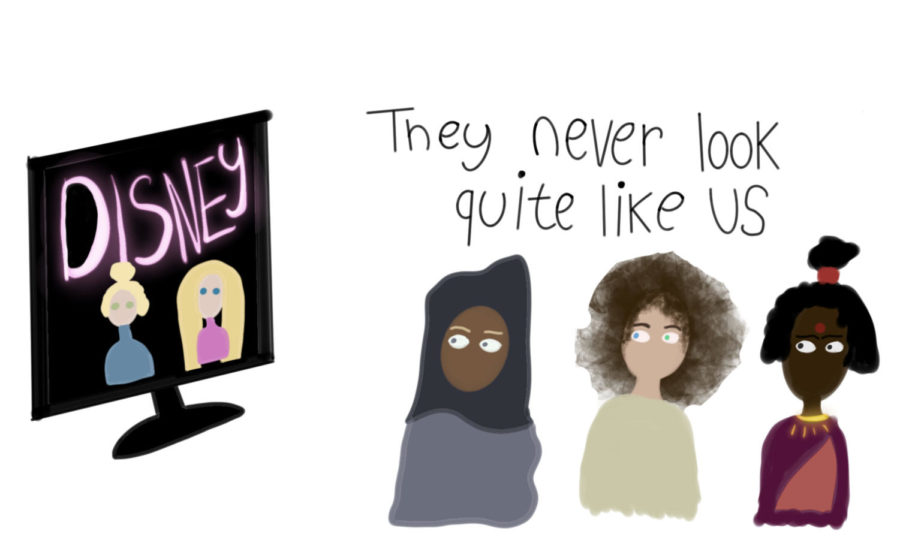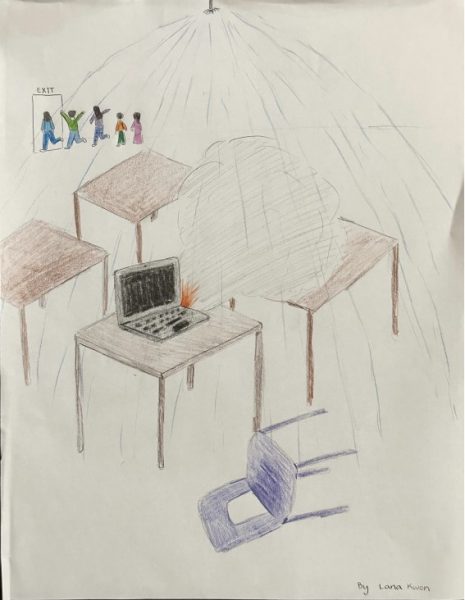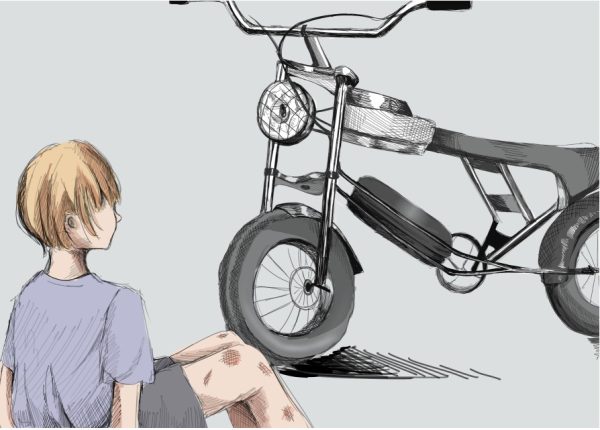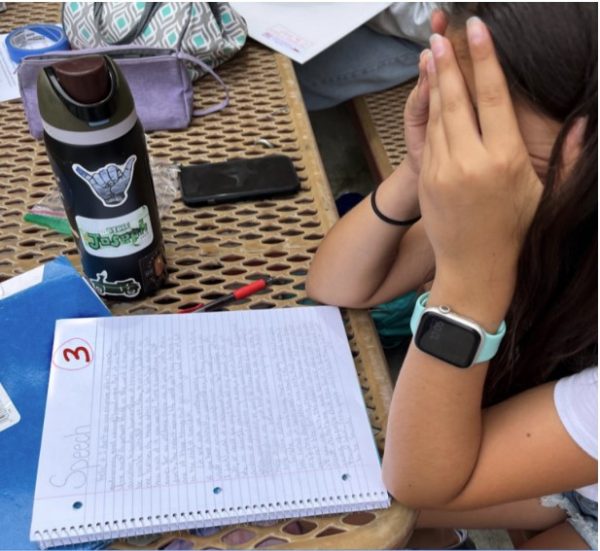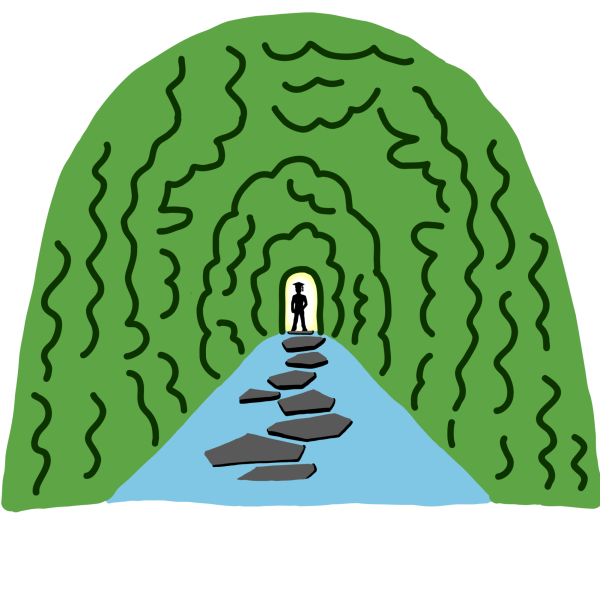Disney Provides a Lackluster Representation of Islamic Culture
Personal experiences conflict with attempts of infamous media showing Islamic culture
Some minorities struggle to find representation of their culture, appearance, or ethnicity in Disney shows and movies.
Many kids spend their weekend mornings eating cereal on the couch and watching their favorite Disney shows. Some love animated cartoons, while others prefer live-action sitcoms such as “Jessie.” I loved both, consuming every bit of Disney media my mom allowed me to. Though with every show I watch, I see the same people; people of European descent who had their entire family born and raised in the United States. As a Syrian and Muslim person who is the first generation in my family to live in the United States, I was puzzled. No one was like me.
However, Disney is now attempting to expand their horizons when it comes to representing different minorities. One show worth mentioning is “Ms. Marvel,” a Marvel show about a Pakistani, Muslim girl named Kamala inheriting powers that match her idols. The trailer for this show features a scene inside a mosque with people praying.
According to nerdist.com, “Ms. Marvel gave fans an origin story for Kamala Khan, the first Muslim superhero in the MCU.”
To say I was shocked would be a giant understatement. I was exhilarated. I ended up showing my mom, dad, brother and practically my entire friend group. Never have I seen a production made by Disney show the inside of a mosque. It seems minuscule, but it is special to me because I never felt so represented by a single scene. Viewers of the show can finally see how I practice my religion, instead of having to assume, guess or rely on media.
Eventually, after the initial excitement died down, I realized that Kamala is from Pakistan, not Syria. With Islam or any religion, each region of the world has different ways to practice the rules of faith. Culture ties into Islam a lot, which means that a lot of what Kamala will do will not exactly match how I practice Islam. For example, Eid, which directly translates to “holiday”, is not as huge of a celebration from where I am. In the show, we see Kamala’s entire community gather at the mosque dressed in cultural clothing in order to celebrate Eid. Of course, I am still happy to see a Muslim girl portrayed in media, but she is not like me.
In order to properly represent a minority, you have to take into account all the nuanced ideas about that minority. It is like simply stating that someone is from Asia. Where in Asia are they from? If they are from Russia, they will have many different experiences than someone from Singapore.
Disney confuses this concept when it comes to the infamous movie, “Aladdin.”
According to teachmideast.org, “By erasing distinctions between MENA cultures and people, it feels like the filmmakers are saying that brown is brown, and we’re all basically the same to them.”
Instead of mixing every culture together, Disney should have stuck with the original Middle Eastern setting, including dialogue in Arabic and clothing that’s native to the country it is set in. Princess Jasmine should not be wearing clothing that is similar to Indian culture, but rather a long, flowy dress that protected her from the intense sand storms that were in the deserts.
As someone whose name is just one letter different from Princess Jasmine, you can imagine my devastation as a kid to see that Jasmine is not like me at all. We do not dress the same, look the same or talk the same.
To this day, I have still not seen a Syrian, Muslim girl represented in a Disney film or show. Perhaps I am asking for too much, as Disney made the effort in order to represent multitudes of other cultures.
According to northstaronline.org, “Disney has been getting a lot of praise for their cultural movies they have been doing recently, setting the feel of the characters emotions and the [surroundings.] Throughout all Disney cultural movies they take place during different time periods and different countries. Colombia (Encanto, 1950s), Northern China (Mulan 221 BCE-1912 CE), and Motunui (Moana ,984 BC). Giving you different eras and traditions that inspired the many writers, producers, directors, etc. to show from around the world.”
But with all these new cartoons and shows showing minorities, there still is not a cartoon with an openly Muslim person, who celebrates their religion and themself. I hope that future generations can see themselves in their favorite shows which is something that seven-year-old me never had the chance to experience.
Your donation will support the student journalists of Woodbridge High School. Your contribution will allow us to purchase equipment and cover our annual website hosting costs.
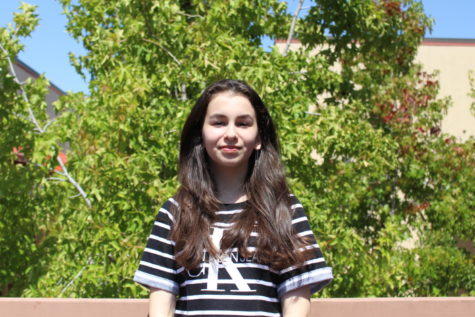
Hey! I'm excited to be your Social Media Manager and writer! Taking on these positions, I really hope to meet your expectations of writing and making Instagram...
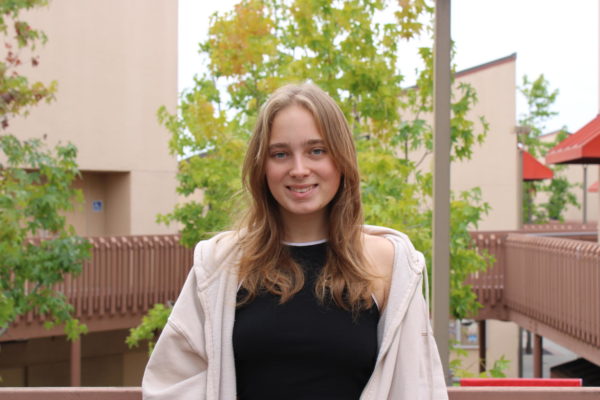
Hey, it's me Lisa. I am looking forward to a fun and creative year for Golden Arrow and making visuals for the newspaper. Things that inspire me are studio...



